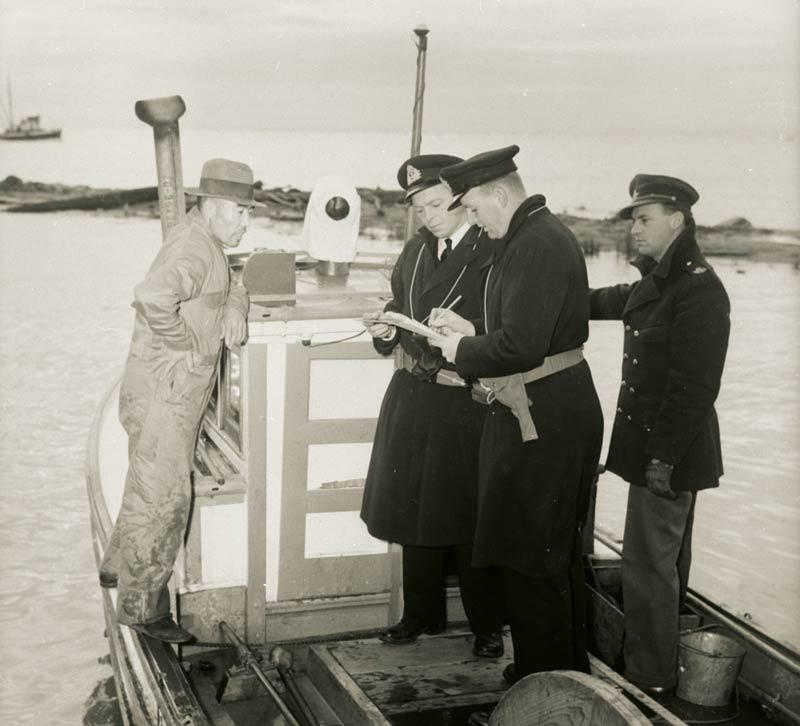
Royal Canadian Navy officers question a Japanese Canadian fisherman near Esquimalt, B.C., in December 1941. [DND/LAC/PA-037468]
The War Measures Act went into law on Aug. 4, 1914, allowing the cabinet to bypass the House of Commons and the Senate and to rule by decree in the event of “war, invasion or insurrection, real or apprehended.”
It is the last word in this definition that caused the most problems. If cabinet perceived anyone or anything a threat, it could act unilaterally and outside the law and the central pillars of democracy. The government could censor publications, arrest, detain and deport individuals without trial, control trade and seize private property.
And it did. The country was faced with the horrors of the first modern war, and subsequently banned hundreds of publications, interned thousands of civilians and confiscated their property.
The country banned hundreds of publications, interned thousands of civilians and confiscated their property.
The War Measures Act was used again in 1939, where it was once more used to censor newspapers and periodicals and ban more than 30 religious, political and cultural organizations. What is most remembered, however, are the tens of thousands of Canadians of German, Italian and Japanese descent who were interned and had their property confiscated; some were even deported after the war.
The modern version was Prime Minister Pierre Trudeau’s use of the War Measures Act in 1970 to deal with the FLQ crisis. That year, the Front de libération du Québec kidnapped British trade commissioner James Cross, and a few days later they kidnapped Pierre Laporte, Quebec’s labour minister. Premier Robert Bourassa asked Trudeau to invoke the War Measures Act and on Oct. 16, it was proclaimed. That morning, hundreds of people were arrested.
The FLQ had been adept in projecting itself as a large organization, and it garnered a lot of sympathy among nationalists. But when Laporte’s body was found in a trunk, that understanding vanished. Years after the so-called October Crisis, it was ascertained that the FLQ had only about 35 members.
Invoking the War Measures Act to suspend the rights and civil liberties of a population was controversial, and Trudeau announced he would amend it, but it didn’t happen during his tenure.
In 1988, four years after Trudeau left office, the War Measures Act was replaced by the Emergencies Act. The crucial difference between the two is that cabinet can no longer act on its own and that any action is subject to the Bill of Rights and the Charter of Rights and Freedoms. It also prescribed compensation for those affected by the act. That same year, Prime Minister Brian Mulroney apologized to Japanese Canadians for their treatment during the war and awarded compensation of $21,000 to each survivor.
Since its inception, the War Measures Act courted controversy, because those powers could so easily be abused, all democratic safeguards ignored. The Emergencies Act has proved only slightly less controversial.
In February 2022, Prime Minister Justin Trudeau invoked it after anti-vaccine protesters had occupied Ottawa for several weeks. It was the first time it had been used. The protesters were arrested or escorted out of town. But the move resulted in an inquiry on whether it was necessary and whether the law should be changed.
Advertisement



















